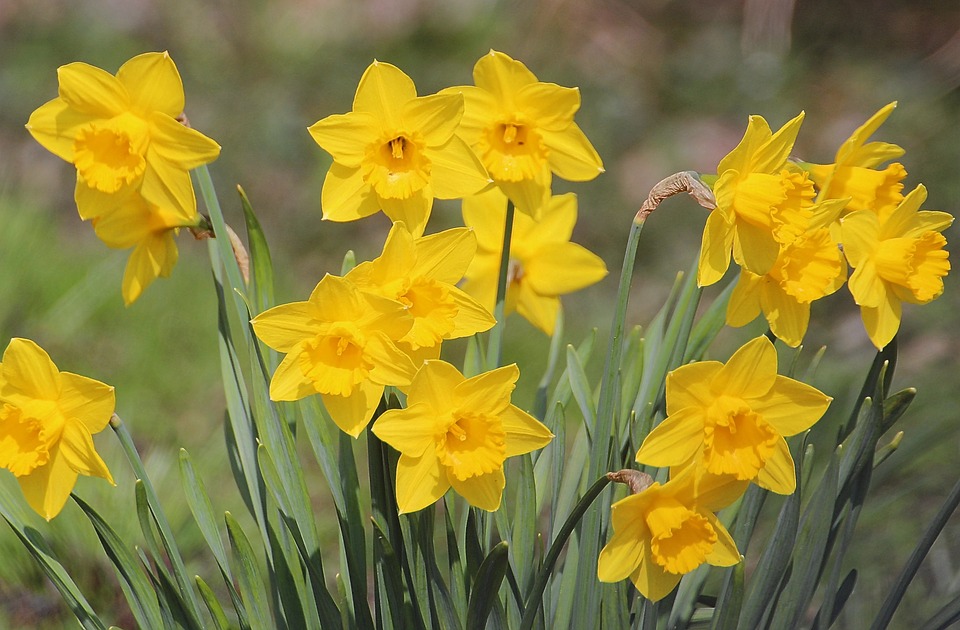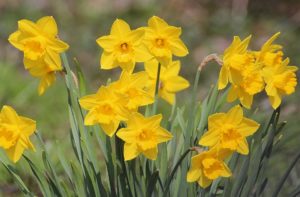Be-a-Better Gardener
Phenology in The Garden
Plant peas when the daffodils start blooming
By Thomas Christopher
Spring isn’t what it used to be. That’s not just the opinion of some grumpy old man (I’m not grumpy). Check with the Arnold Arboretum in Boston. For more than a century, this institution has been celebrating “Lilac Sunday” at the peak bloom of its lilac collection. In 1908, the first year, this event fell on May 25th; this year it is scheduled for May 13th.
This testifies not only to the dramatic change that has occurred in our climate, with spring arriving (at least in Boston) approximately 12 days earlier, but also the value of plants as markers of the season. The study of this is the science of phenology. When applied on a practical level, it can be very useful to gardeners.
Consider, for example, all the traditional phenological markers for planting dates. Plant your potatoes, says one, when the shadbush (Amelanchier canadensis) blooms. The value of this tip is that, unlike our inflexible astronomically-based calendar, which is based on the movement of the sun and doesn’t reflect changes in our climate or peculiarities of the weather, the blooming of the shadbush does. During an unusually cold, late spring, it will bloom later, whereas during an early, unusually warm spring, it will bloom earlier. In this way it more accurately reflects what is happening in nature outside our door and so provides a more reliable guide to what is the best time to put your seed potatoes out in the garden.
Plant your peas, my wife was told when she was a little girl, on St. Patrick’s Day. Her father, the source of that bit of wisdom, had probably learned it from his Irish-born father. Not only has the climate changed since her grandfather’s day, but so has the location of the family garden, from Ireland to Cambridge, Massachusetts, and now to the chilly Berkshire Hills. Clearly, the planting date should have changed to reflect the differences in the local climates. That’s why I prefer the phenological recommendation to plant peas when the daffodils start blooming.
A few more phenological planting tips include:
- Plant corn when the oak leaves are the size of a squirrel’s ear.
- Plant beets, lettuce, and spinach when the dandelions start blooming.
- Plant beans when the lilacs are in full bloom, and cucumbers and squash a little later when the lilac blooms start to fade.
- Direct sow zinnias and marigolds into the garden when the black locust is in bloom.
Phenology can also be quite useful in timing pest control for maximum effectiveness. Crabgrass preventers, for example, which work by preventing the germination of crabgrass seeds, may wash away and become ineffective if applied too early in the spring, and if applied after the crabgrass seeds start to sprout are ineffective as well. Again, the date when the crabgrass seeds start to germinate will vary with the weather of any given spring, but so will the beginning of the forsythia bloom, which is the time that I was taught to apply the crabgrass preventer, and I have found that timing to be quite effective over many years’ practice.
A fine example of the benefits that phenology can bring relates to control of the squash vine borer, a particularly destructive pest of pumpkins, zucchinis and all sorts of squashes. The damage begins one week after the adult, a moth, lays its eggs at the base of the vines. Conventional treatment calls for spraying with an insecticide during the last week of June and again at 7 to 10-day intervals until the end of July. An alternative, easier and less toxic treatment is to cover the plants with a floating row cover to ward off the adult moths from the time when they first appear in your garden until two weeks later. How, though, do you know when the squash borer moths will appear? Phenology tells us that usually coincides with the bloom of that blue-flowered, roadside weed, wild chicory.
If you have phenological tips of your own, I’d love to hear them. You can send them to me at tchristopher06457@gmail.com
Thomas Christopher is the co-author of “Garden Revolution” (Timber Press, 2016) and is a volunteer at Berkshire Botanical Garden. berkshirebotanical.org
Be-a-Better-Gardener is a community service of Berkshire Botanical Garden, one of the nation’s oldest botanical gardens in Stockbridge, MA. Its mission to provide knowledge of gardening and the environment through 25 display gardens and a diverse range of classes informs and inspires thousands of students and visitors on horticultural topics every year. Thomas Christopher is the co-author of Garden Revolution (Timber press, 2016) and is a volunteer at Berkshire Botanical Garden. berkshirebotanical.org.




